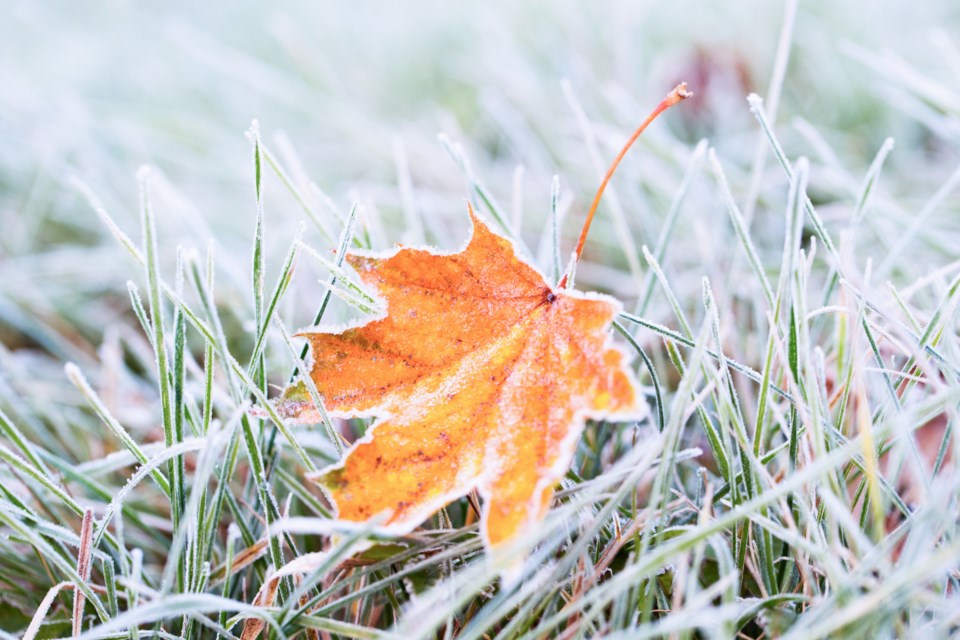With October temperatures soaring into the 20s, many gardens are still abloom, with planters are still providing “pops of colour,” noted Master Gardener Marina Dimitriadis.
But winter is coming, and it’s definitely time to start preparing the garden for the changing season.
Dimitriadis and fellow Lake Simcoe South Master Gardener Jeannie Nicolaou were at the Bradford West Gwillimbury Public Library on Wednesday, providing step-by-step advice for getting gardens ready for winter.
A first step is clearing out the planters and pots. While annuals might keep going for “a few more weeks,” said Dimitriadis, the danger of frost is there, and it’s a good time to switch to a more seasonal display – adding ornamental grasses or cabbages for the fall, before creating holiday décor using red osier branches, birch stems, cedar and berries.
Metal, stone, wood and fibreglass containers can be left outdoors; anything terracotta, clay or ceramic should be emptied, cleaned and brought indoors.
Cleaning up is an important part of getting ready for winter, to prevent the spread of plant diseases, fungus, mold and mildew. Any diseased plant materials should be discarded, and never used as a mulch or home compost. Only the municipal composting program reaches temperatures high enough to destroy the spores; the Master Gardeners recommended collecting diseased leaves or stems and setting them out in yard waste bags for municipal collection.
Pots and gardening tools should be sterilized, using a mild bleach solution of 9 parts water to 1 part bleach – strong enough to clean, but mild enough that it won’t harm the plants.
“Do a final weeding before it gets cold,” suggested Dimitriadis, and add fresh mulch to discourage weed growth. It will make gardening in the spring so much easier.
This is also the time to cut back some foliage – especially irises and peonies, which can harbour mould and disease – but don’t cut back everything. Leave some flowering heads, like hydrangeas, to provide interest in a winter garden, and hollow-stemmed plants to provide shelter for native bees.
Fall is the perfect time for review and planning, the Master Gardeners said. “It’s a really good time to decide what you really liked, and what you didn’t like,” Dimitriadis said – to plan changes, divide plants, bring tender bulbs and plants indoors, and “a good time to buy bargains at nurseries.”
Take steps to protect vulnerable plants from damage over the winter months – providing protection from sun scald, wind or ice damage, and frost. Mulch can provide protection to plant roots; just don’t create a “mulch volcano”, mounded up and around the trunk of a tree. “Mulch should not come in contact with tree trunks. Thumbs down to the volcano,” she said.
Covering tender plants with burlap or shredded leaves, using chicken wire to protect tender bark from hungry rodents and rabbits –gardener can take steps to protect their ‘investment’ from the harsh threats of winter.
Winter is also a time for maintenance. Clean and check the lawnmower; clean, sterilize and sharpen garden tools; drain all hoses and sprinklers to “make sure all the water’s out, including your rain barrels.”
And once the chores are done, the garden prepared for its winter sleep, the gardener can rest – until the spring.
Dimitriadis and Nicolaou answered questions, and talked about the Master Gardeners group.
“The primary focus is really to give back to the community,” said Dimitriadis. “To share information with each other, or people in the industry. It’s just kind of nice to share something you’re passionate about.”
A reminder: The BWG Public Library hopes to open a seed library in the spring and is looking for donations of seeds (identified as to plant, annual or perennial, flower colour, etc.) from gardeners.




